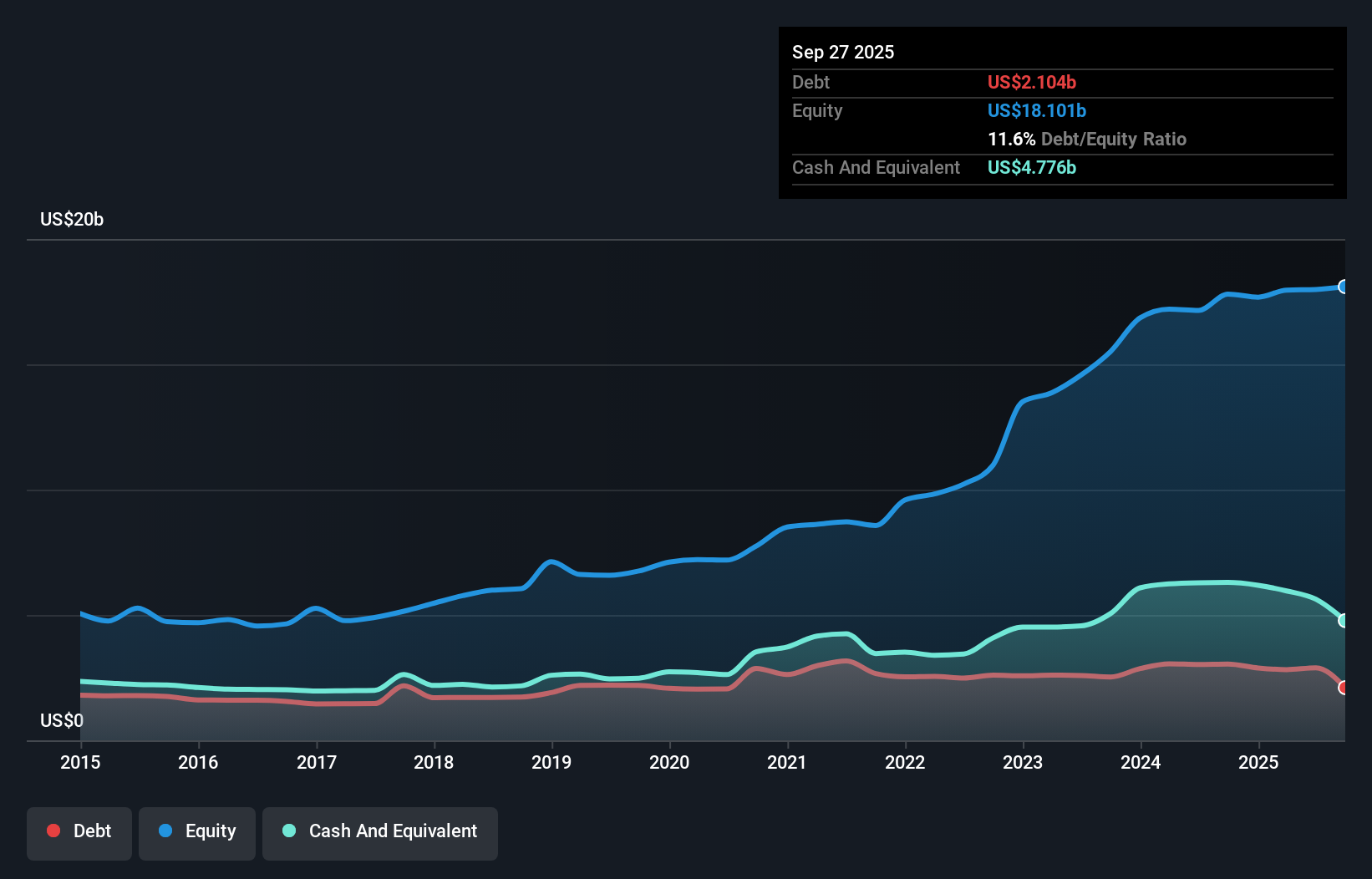Legendary fund manager Li Lu (who Charlie Munger backed) once said, 'The biggest investment risk is not the volatility of prices, but whether you will suffer a permanent loss of capital.' So it seems the smart money knows that debt - which is usually involved in bankruptcies - is a very important factor, when you assess how risky a company is. We can see that STMicroelectronics N.V. (EPA:STMPA) does use debt in its business. But should shareholders be worried about its use of debt?
What Risk Does Debt Bring?
Debt assists a business until the business has trouble paying it off, either with new capital or with free cash flow. In the worst case scenario, a company can go bankrupt if it cannot pay its creditors. While that is not too common, we often do see indebted companies permanently diluting shareholders because lenders force them to raise capital at a distressed price. Of course, debt can be an important tool in businesses, particularly capital heavy businesses. When we examine debt levels, we first consider both cash and debt levels, together.
What Is STMicroelectronics's Net Debt?
As you can see below, STMicroelectronics had US$2.10b of debt at September 2025, down from US$3.04b a year prior. But it also has US$4.78b in cash to offset that, meaning it has US$2.67b net cash.

How Strong Is STMicroelectronics' Balance Sheet?
According to the last reported balance sheet, STMicroelectronics had liabilities of US$3.36b due within 12 months, and liabilities of US$3.22b due beyond 12 months. Offsetting these obligations, it had cash of US$4.78b as well as receivables valued at US$2.35b due within 12 months. So it actually has US$540.0m more liquid assets than total liabilities.
This short term liquidity is a sign that STMicroelectronics could probably pay off its debt with ease, as its balance sheet is far from stretched. Simply put, the fact that STMicroelectronics has more cash than debt is arguably a good indication that it can manage its debt safely.
See our latest analysis for STMicroelectronics
In fact STMicroelectronics's saving grace is its low debt levels, because its EBIT has tanked 74% in the last twelve months. Falling earnings (if the trend continues) could eventually make even modest debt quite risky. The balance sheet is clearly the area to focus on when you are analysing debt. But it is future earnings, more than anything, that will determine STMicroelectronics's ability to maintain a healthy balance sheet going forward. So if you're focused on the future you can check out this free report showing analyst profit forecasts.
Finally, while the tax-man may adore accounting profits, lenders only accept cold hard cash. While STMicroelectronics has net cash on its balance sheet, it's still worth taking a look at its ability to convert earnings before interest and tax (EBIT) to free cash flow, to help us understand how quickly it is building (or eroding) that cash balance. Looking at the most recent three years, STMicroelectronics recorded free cash flow of 21% of its EBIT, which is weaker than we'd expect. That's not great, when it comes to paying down debt.
Summing Up
While it is always sensible to investigate a company's debt, in this case STMicroelectronics has US$2.67b in net cash and a decent-looking balance sheet. So we are not troubled with STMicroelectronics's debt use. There's no doubt that we learn most about debt from the balance sheet. But ultimately, every company can contain risks that exist outside of the balance sheet. For example, we've discovered 2 warning signs for STMicroelectronics that you should be aware of before investing here.
When all is said and done, sometimes its easier to focus on companies that don't even need debt. Readers can access a list of growth stocks with zero net debt 100% free, right now.
New: Manage All Your Stock Portfolios in One Place
We've created the ultimate portfolio companion for stock investors, and it's free.
• Connect an unlimited number of Portfolios and see your total in one currency
• Be alerted to new Warning Signs or Risks via email or mobile
• Track the Fair Value of your stocks
Have feedback on this article? Concerned about the content? Get in touch with us directly. Alternatively, email editorial-team (at) simplywallst.com.
This article by Simply Wall St is general in nature. We provide commentary based on historical data and analyst forecasts only using an unbiased methodology and our articles are not intended to be financial advice. It does not constitute a recommendation to buy or sell any stock, and does not take account of your objectives, or your financial situation. We aim to bring you long-term focused analysis driven by fundamental data. Note that our analysis may not factor in the latest price-sensitive company announcements or qualitative material. Simply Wall St has no position in any stocks mentioned.
About ENXTPA:STMPA
STMicroelectronics
Designs, develops, manufactures, and sells semiconductor products in Europe, the Middle East, Africa, the Americas, and the Asia Pacific.
Flawless balance sheet and good value.
Market Insights
Community Narratives




